Places to Gather
& Socialize
This post speaks to the most popular Beer Garden in Lake View - Bismarck/Marigold Gardens and the evolution of that space. This post also speaks to other beer gardens in Lake View and finally the Picnic Groves of the area.
were serious about their beer gardens
One of the largest groups of migrations to the City of Chicago and the Township of Lake View in the mid to late 19th century were the German-speakers of Europe. By 1890 one third of all the
The Saloon:
Public Drinking in Chicago and Boston,
1880-1920 By Perry Duis
According a publication called Hidden History of Ravenswood & Lake View by Patrick Butler, "in 1914 one-third of Chicago's 600,000 Germans - most of them living in Lake View area - signed a resolution pledging Austrian Emperor Franz Joseph and Germany's Kaiser Wilhelm 'our unchangeable love of the home and Fatherland." From the city's beginnings beer and Chicago are nearly synonymous. In time most of the breweries built in the city were located on the north side near the border with Lake View township because the brewers discovered that area's topography was most favorable to building cool, underground 'aging rooms' conditions most suitable within a commercial buildings' basement.
Bismarck/Marigold Gardens
1896-1923
to Marigold Arena
from a beer garden
to boxing/wrestling to the Halsted Flats
Most of the following images are from Chicago History in
Postcards, Chicago Public Library, Ebay, and Chuckman Collection as well as from my own private collection
postcard - Ebay
Once called
DeBerg's Grove
since 1880
and apparently the
by Anheuser-Busch Brewing Association
and after that ....
The Garden City House
The ethnic Germans of the old Lake View (1857-1889) and the visiting residents of Chicago liked to be social and loved to get their drink on! One in particular popular place to do just that was on the corner of Halsted and Grace streets
1894 Sanborn Insurance Fire Map
this establishemnt would expanded to Bradley Place by 1923
map zoomed from above
Bismarck Gardens was located at the southwest corner of Grace and Halsted Streets in newly formed District of Lake View from 1896 - 1923. The brothers Emil and Karl Eitel served a sizable number of German-Americans living on Chicago's northside
(Emil was a resident of the South-East Ravenswood neighorhood of the District of Lake View).
The park-sized space quickly became one of the city's most popular summertime beer gardens. It featured ample amount of shade trees, electric lamps, an outdoor stage and outside dance floor,
and of course plenty of German beer and music.
from Richard's Tourist Guide of Chicago
the 1904 edition
Google 2009 View of the Property
below that included the of Marigold Room now a house of worship, Ihop Restaruant, and the parking lot to the right of the photo now an apartment complex
2023 Google Map view
of the space
The only remaining building (Marigold Room) is occupied by
Open Arms United Worship Center
image above - 'Challenging Chicago' by Perry Duis
by Jackie Arreguin
postcard - Ebay
zoomed from the above postcard
Programs
by Professor Carl Bunge
who apparently specialized in Waltz's



Bismarck Company
finally owns its property
1914 ad below - Chicago Daily Tribune
Bismarck Gardens did have some problems with its neighbors much like the neighbors surrounding Wrigley Field today – parking and the noise! Other issues were WWI anti-German sentiment, labor strikes, and Prohibition Act of 1919. Bismarck Gardens had to renamed its' establishment to Marigold Gardens by 1916, in a response to rising anti-German sentiment in the city before and during the First World War. In 1923, Marigold Gardens venue changed with new management, and new entertainment. For a brief time during the late 1920's, the Gardens became known as Vanity Fair known for its cabaret shows. It was later well known by the mid-20th century for professional boxing/wrestling matches with another name change to Marigold Arena. One building, Marigold Room, still remains and used for a religious congregation since 1963.
photo - Chicago History in Postcards
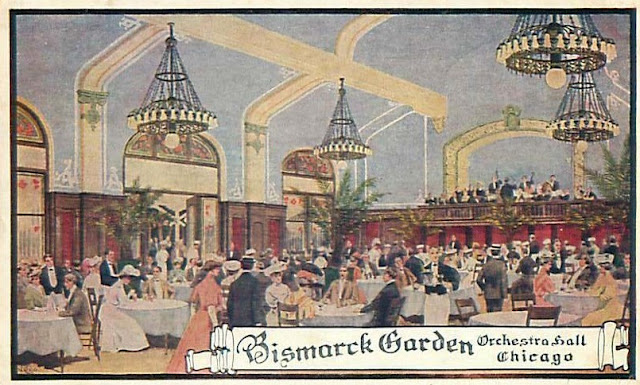
The Bismarck Gardens' elegant and shady gardens have long since been paved over first with a parking lot since the 1960's and in 2014 by the Halsted Flats-the former garden area.With that the Eitel brothers owned another piece of real estate but in the Loop area of Chicago called Bismarck Hotel - now called Hotel Allegro Royal and the Old Hiedleberg Restaurant and currently called Argo Tea on Randolph Street. 
a 1905 advertisement
Postcard caption mentions a marble terrace
and 'ice cooled to 70 degrees'
Marigold Room was most popular of the rooms
postcard - Ebay
Summer Entertainment
in 1908
postcard - Ebay
postcards - Ebay
A Dog Show
in 1911
postcard above from
Chicago City of Neighborhoods via G. Schmalgermeier
A Fire and
Protest June 1913
postcard - Ebay
zoomed view below
Dogs on Parade
in 1913
Bismarck Company
finally buys the land under its feet
in 1914
A Critics Review
in 1914
a dinner menu
a 1915 advertisement
in 1915
While the United States was nuetral in the war in Europe at this time I would imagine this event booth was not all that popular outside the German-American community
A German-American
Fest in 1915
The New
Marigold Room
in 1916
a zoomed view below
1916 advertisement - Chicago Daily Tribune

Their Fashion Shows
were very popular
Dog Show
with Midwest Contestants

Postcard 1916 - CowCard.com
Chicago Daily Tribune Ads
No Booze on
Sundays in Illinois
.jpg)

A big deal for the Garden in 1915 
The World War I
Years
German Empire's eagerness to have Republic of Mexico join the European War against the United States entry to the European war - this did not help German-American establishments in America. - Charles Vazquez via Forgotten Chicago-Facebook
World War I years (1914-18) were years of difficult transitions for the Garden. The establishment almost closed entirely mostly due to hateful anti-German attitudes of anything German world-wide. Bismarck Gardens was named after the first German Chancellor Otto Van Bismarck of Germany. In Great Britain the royal family, due to public pressure, changed their last name from Saxe-Coburg-Gotha (Sachsen-Coburg Gotha in German) to an English surname - Windsor. The 'gardens' popularity during the war years was the beginning of decline. The Gardens' owners also changed the name to an English sounding name - Marigold Gardens - named after one of their enclosed dining areas the owners renovated in 1916.
The Sentiment
from a book called 'Big Bill of Chicago'
And then their was
Union Labor Unrest in 1917
The Day Book - Library of Congress
It got ugly with
A Bomb Plot in 1917
Demands to Change the Name
of their Beer in 1917
Trying to promote an allegiance
to the US war effort
to their German speaking customers
in 1916
photo - a Linda Woods contribution
Bismarck was the name of the royal prince of Germany and Marigold was the name of one the buildings of the gradens.
The same sorta name change occurred in Great Britian in 1917 so to distance themselves from their German roots. 'The House of Windsor' became the new royal title in 1917 by a proclamation of King George V, replacing the historic name of Saxe-Coburg-Gotha. It remains the family name of the current Royal Family. - The House of Windsor The Name Change in 1917
Bismarck is out Marigold is in
ad below - Art Institute of Chicago
Chicago Daily News Ad 1918

3 photos above - Bid Start
Dorothy Jane Weeghman at a charity event in 1915
Little Ms. Weeghman's father was the owner of the Weeghman Park aka Wrigley Field - Daily News Archives

parking tip bandits &
honking on Grace Street in 1917
Chicago Daily Tribune Ads
1914-1917

photo below - Chuckman Collection
of the building from past to present.

The Chicago Tribune articles below
about it Evolution
Big Bill Thompson, a resident of Lake View East and candidate for Mayor of Chicago campaigns at the Gardens in 1915
Signage at Weeghman Park
aka Wrigley Field
photo with a zoomed view - Library of Congress
via Jeff Nichols, Forgotten Chicago on Facebook
Federal League Park (Wrigley Field) 1914
with rooftop advertisement from the 'garden'

(My Facebook Album)
sample pages
A Labor Strike
in 1917
Shows at Parks and
Gardens Advertisement
from the Chicago Examiner October 1917
advertised as Bismarck Gardens
Gay Shows at the
Gardens
advertised as Marigold Gardens
as of Janurary 1918
zoomed belowWhere to Go of an Evening
February 1918
Support for the War Aliied Effort
in Europe
part of a full page Chicago Examiner ad
February 1918
zoomed segment belowMannequins of the
1920 photo - Chicago History Museum
Chicago Daily Tribune
advertisement in 1923
as of 1923
Sanborn Fire Insurance Map
the property would remain in the same ownership
for decades but the venues would change for decades
a 2020 Google Map
Overlay shows vintage labels over modern landscape
A memory from The Open Arms United Worship Center, Dr KC Hill, pastor. His congregation occupies the only remaining building
once called the Marigold Room (on the right of photo)
The Vaudeville Years
late 1920's
Some of their Performers:
A Bio of one of their Popular Performers
The Marigold Gardens nightclub was managed by Henry Van Horne after 1923. He promoted a young woman named a Ruth Etting. She was born in 1896 and died in 1978, first was ‘pin-up’ girl later to be known as a singer/actor. Her husband was a Jewish-American gangster named Martin "Moe The Gimp" Snyder. The story of their lives was made into the movie called "Love Me or Leave Me" with Doris Day and James Cagney.
Their Star Performer
a 1978 article about her
A Review in 1922
bring your own
flask!!
Linday Woods' Story
of her Great-Grandmother a contributor to LakeView Historical-Facebook
"Linda Wood mentioned: "My great grandmother was a dancer in the chorus and was friends with Ruth Etting.The first newspaper clipping I have is 1915, and my great grandfather played the trombone with Fred Hamm [Orchestra] in the mid-20s at the club. My great-grandmother was the wardrobe mistress for the Marigold [Gardens] and the other local dance palaces. I loved hearing the stories from my mom retold of those old days.
She is in the top row [of the above photo], third from the left."
photo - Linda Wood
highlighting her great grandmother
with a view of her great grandfather below
photo from Linda Wood with great-granddad on left
Fred Hamm and his Orchestra were a 'Big Band' from Chicago that was managed by Edgar Benson of Benson Orchestra fame. Hamm's Orchestra performed at the Marigold Garden
Listen to the sounds of that band and its era with
this YouTube link and this link - and enjoy the vintage sounds More Family Photos
from Linda Wood
photo below via John Crieghton
from Living History of Illinois and Chicago-Facebook
The Dry Years
1919-1933
The 18th amendment to the US constitution would follow some direr times for the Gardens. Months before the national law the mayor of Chicago, Big Bill Thompson agreed to band liquor on Sundays to conform with a State of Illinois that recently passed a law of their own in 1919.
The Ernie Young's Fall Frolics featured
A Cabaret Performances
by 1922
jjA Program Booklet
Listen to the
via YouTube
Listen to the
via YouTube
beer pitcher per Ebay
 Beer mugs used at both the Gardens and their hotel - Ebay
Beer mugs used at both the Gardens and their hotel - Ebay
A Narrative
of the Owners
in 1928
in Postcards:
The Bismarck Hotel
A New Era for the Property:
Vanity Fair
Apparently during the late 1920's to the early 1930"s this entertainment venue went through a lot of management & name changes. For a brief time period the old gardens became known as Vanity Fair apparently closed twice and then reopened again
the matchbook is part of my collection
advertisement below - Chicagoan
The 'New' Vanity Fair by 1932
Rainbo Gardens
Leased a Section of it in 1935
The Boxing &
Wrestling Years:
with Another Name Changed to
Marigold Arena
By the early 1930's through early 50's Marigold Gardens now called Marigold Arena became the location for regional and nationally acclaimed boxing/wrestling matches
Below is a Review
of the Arena's History in 1977
of this Time Period
Concerts during the Depression
a list in 1936
Boxing line-up card - (front & back) Ebay
a 1939 ticket
image - Ebaya 1940 Advertisement ...
from Ebay
Fights in 1942
photos - Ebay
reverse side
1949 ticket - Ebay
Boxing Newspaper Photo in 1949
1951 Press Passes
photos - Ebay1953 ticket below - Ebay
photo - Ebay

'Wrestling from Marigold is an American sports program
broadcast from the Marigold Arena [& outside area] in Chicago which aired on the DuMont
Television Network from Saturday, September 17, 1949, until March 1955. The
show lasted for either 90 or 120 minutes, usually on Saturdays at 9pm ET, and
continued to be broadcast on WGN-TV as a non-network show until 1957. The show
was broadcast live by WGN from Marigold in Chicago, produced by National
Wrestling Alliance promoter Fred Kohler, with play-by-play by Jack Brickhouse.
Vince Lloyd served as the announcer. Lloyd also did live commercials for such
products as Aero Shave. This was the last network TV broadcast of wrestling in
the US until Saturday Night's Main Event on NBC in 1985.' - Wikipedia

images above - Ebay
Jack Brickhouse in the 1950's
‘Wrestling from Marigold’
is an American sports program
broadcast from the Marigold (Gardens) Arena in Chicago which aired on the Du Mont
Television Network from Saturday, September 17, 1949, until March 1955. The
show was either 90 or 120 minutes, usually on Saturdays at 9pm ET, and
continued to be broadcast on WGN-TV as a non-network show until 1957 starring Jack
Brickhouse and Vince Lloyd. The show was broadcast live by WGN from Marigold Arena and produced by National Wrestling Alliance with promoter as the
Fred Kohler, with play-by-play by Jack Brickhouse and Vince Lloyd as the announcers. This was the
last network TV broadcast of wrestling in the U.S. until 'Saturday Night's Main
Event' on NBC in 1985 - Wikipedia
New Owners
in 1951
boxing continues
in 1954
Jiu Jitsu Classes
by the 1960's
takes over in 1963


 photo below - 1964 Lake View anniversary magazine
photo below - 1964 Lake View anniversary magazine
Places that were Near By:
The Wishing Well
Trail's End
Marigold Car Service by 1952
On the corner of Bradley Place & Halsted stood
Marigold Car Serviceimage - David Akiyama contributorpart of my collectionHarry Fischman LiquorsOn the southwest corner of Halsted Street & Bradley Place once stood Harry Fischman Liquors, a member of High/Low Liquors during the 1950's and then Foremost Liquors by 1966. Both stores had an address of 3766 N Halsted StreetPlanned in 2009
Google view just before the planned development
According to this
interactive aerial mapping site (1962-1973) the buildings and garden
structures of the former beer garden space had disappeared and been
replaced with a parking lot and a
Ihop Pancake House.
photo below - Tony
Garza/LakeView Historical/Facebook
the Bradley Place corner
by 2010
the former Bismarck/Marigold Garden area
images via DNAinfo
This is the original proposed 'planned development' for
what was picnic grove area of Bismarck/Marigold Gardens. The grayish dwelling
drawing at the top right was the Marigold Room. The small grayish drawing next
to it is the pancake house
where the initial beer garden building stood.
The grayish dwellings are not part of the
proposed development.
Construction
began in 2012 photos - garry albrecht
photos - garry albrecht
photo - garry albrecht
photo - Yo Chicago
Across the Street on Grace Street ...
Marigold Arcade
during the same time the Marigold Arena
was sporting boxing & wrestling
G
Matchbook Cover - Ebay
photos - Dr. Jake's Bowling History Blog
a 2003 mention from The Rough Guide to Chicago
The Replacement
The Other Beer Gardens
of the Area:
Kaiser Gaerten
accross the street from the original Old Town Hall
1910 postcard - Chuckman Collection
postcard below - part of my collection
a 1894 map view below
zoomed view below
a 1923 map zoomed view below
Thielmann's Resort
& Gardens
once located at Lake View Avenue & Surf
built in the Township of Lake View as Fisher's GardensThis beer garden/resort was a very popular summer place 1887 Sanborn Map from Historic Map Works
know at the time as Fisher's prior to 1890
 text - 1964 Lake View anniversary magazine
text - 1964 Lake View anniversary magazineHorse lost and found in 1891
The Press Announcement
in 1890
1886 revised 1891 Rascher's Atlas Map
notice Boat Loading Dock, Plank Walk, and Pavilon Platform jetting into the lake below
highlighting the existing shoreline
with a zoomed view below
some press photos
from the Chicago Daily Tribune
The Fire in 1900
Franz Thielmann also owned
Lincoln Park Beach
just yards away
apparently just an outside summer entertainment area
along with his resort buildings
postcard - Ebay
1893 ad below - Chicago and its Suburbs
1891 Sanborn Fire Insurance Map
1894 Sanborn Fire Insurance Map
this map shows the entrance off Lake View Avenue with a zoomed view belowzoomed further still below Some 1894 Advertisements:
Apparently by 1910 Thielmann's Lincoln Park Beach was closed
but with future plans for area by the city
The Rienza Garden
& Café
northeast corner of Diversey & Broadway
 postcards - Ebay
postcards - Ebay

The Rienzi Cafe and Beer Garden was located at east of Evanston (Broadway) Avenue and Diversey (Boulevard) Parkway. Emil Gasch was the owner and proprietor. The cafe was open from 1901 to at least 1916, according to a news report about a death at the restaurant printed in the July 13, 1916, issue of the Logansport Pharos-Tribune. The Lincoln Park Plaza currently occupies this location.
A Sanborn Fire Map view in 1894
a zoomed view of the location below
postcards - Chicago History in Postcards
the beer garden space 1910
postcard - Chuckman Collection
postcard - Ebay
The Sounds of Entertainment
text - Forgotten Chicago Discussion Group transitioned from a beer garden/cafe
to a apartment-hotel
one door east of the initial location
Business card front and back - unknown date Ebay

The
Picnic Groves
of Old Lake View:
image above - The Chicago Food Encyclopedia
“Ogden's Grove, Wright's Grove, Brand's Park, Hoffman Park, and Schutzen Park (pre-Riverview) are among the picnic groves that dotted the Chicago metropolitan area well into the twentieth century. Many were located along rivers and streams, which provided a picturesque backdrop for summer outings. Popular especially among German immigrants, these groves were the scene of special events sponsored by churches, businesses, unions, and clubs.”
Samples of some picnic groves

intially called Wright Woods
home of Camp Fry
a series of articles:
A Picnic in the Summer of 1860
Another Picinc in August
A 4th of July Celebration
in 1869
A Gathering in 1871
A Musical Festival of 20 Thousand Folks in 1881
In 1864 stood the mustering Civil War camp called Camp Fry that was once located in the area of called Wright Woods and then after the war the subdivision of area called Wright Grove to be later called simply Wrightwood. The area was from Diversey Parkway to Fullerton Avenue. Wightwood Avenue no bears its name if not its history.
text below from a publication called the Lake View Saga
Grove
located across the street from Shuetzen Park;
to be the future sight of Riverview Amusement Park
1887 Rascher Atlas Map above 1894 Sanborn Fire Insurance Map
zoomed view below Oak Grove
but by 1921 this space became Merry Gardens known for its roaring 20's & 30's marathon dancing venue
*more on Merry Gardens in the Music post*
1891 Sanborn Fire Insurance Map
The Miller's
Garden
1894 Sanborn Fire Insurance Map
The Poplar
Grove
1894 Sanborn Fire Insurance Map
The Columbus
Grove
(no name indicated?) (list as a Summer Garden)
1894 Sanborn Fire Map zoomed below
Clark/Lawrence Location
(no name indicated)
*Rainbo Gardens was located north of Lawrence*
1887 Raschers Atlas Map
1894 Sanborn Fire Insurance Map
(former Picnic Grove)
According the publication Hidden History of Ravenswood & Lake View (pgs 34-36) by Patrick Butler, in 1893 as a park not a grove in the then District of Lake View. According to a 1905 map below the park was a former picnic grove within Lake View Township [in the 1850's]. The picnic area was located at the northeast corner of Western Avenue at Berteau.
1905 Sanborn Fire Insurance Map
*former picnic grove*
2023 Google Earth View
A Celebration of 71 Years
in 1945
According to Curbed Chicago, "[Henry] Harms bought the land in the late 1850's and used it as a picnic grove for many years, eventually putting up a family home (turned restaurant) in 1892. A year later, the land joined Chicago's park system. Forgotten Chicago details the $1.3M federal housing project nearly built on site in 1933, but the land came to sport single-family homes and a car dealership instead."
once located at
4812-36 N Clark Street
*apparently and intially a roadhouse
for tired travelers of the 19th century*


"As early as 1894 [if not decades earlier], the site was occupied by a small
roadside restaurant that likely enjoyed a robust business. After all, the
roadhouse had a prime location. It was situated alongside what was then still
the main road between Chicago and the northern suburbs, Clark Street (formerly Green Bay Road), and stood across the street from one of the city's largest
cemeteries, St. [Bonifacius] Boniface (dedicated in 1863). Like many of the other picnic groves that operated
across the city's northern periphery during the late nineteenth and early
twentieth centuries, the Clark Street roadhouse would have offered weary
travelers and cemetery visitors a welcome place to stop and refresh themselves
before continuing their journeys or returning to the city. There was food in
the restaurant, drinks in the tavern, and a spacious picnic grove outback. Two
lengthy horse sheds provided visitors a place to hitch their horses and park
their carriages."
The location area per this 1887 Rascher's Atlas
and below Sanborn Fire Insurance Map 1894
The 1894 Sanborn Fire Map below indicates that this established was once a tavern/restaurant with a bowling alley on the property along side sheds for customers horses.
1905 Sanborn Fire Insurance Map
zoomed below
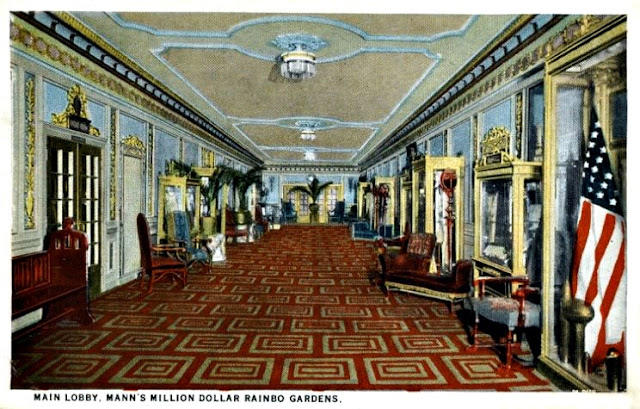
 All photos above - Jazz Age Chicago via Uptown Update
The Chuckman Collection Postcards
All photos above - Jazz Age Chicago via Uptown Update
The Chuckman Collection Postcards



 Some Drama in 1920
Some Drama in 1920No Post Notes
Please follow me to my next post called
Tied Houses & Breweries
These posts are exclusively used for educational purposes. I do not wish to gain monetary profit from this blog nor should anyone else without permission for the original source - thanks!



















 photo below - 1964 Lake View anniversary magazine
photo below - 1964 Lake View anniversary magazine



 Some Drama in 1920
Some Drama in 1920




















































.jpg)
.jpg)



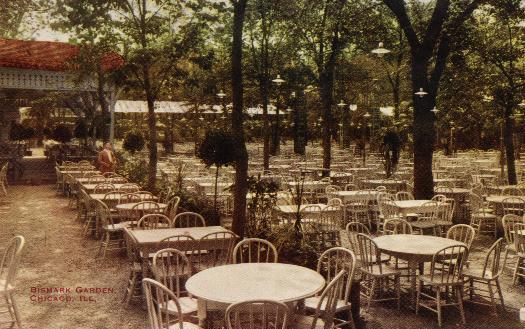






































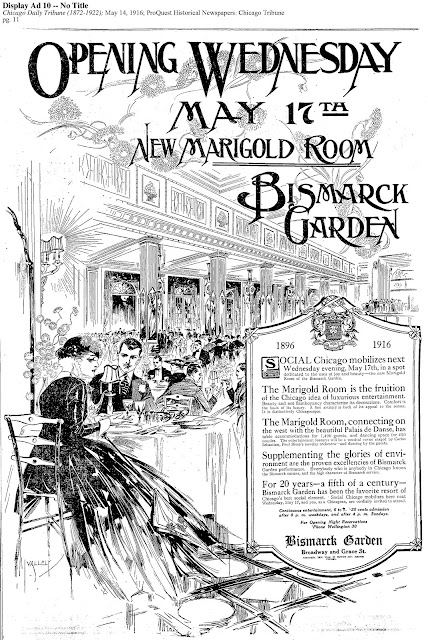
































.jpg)

















































































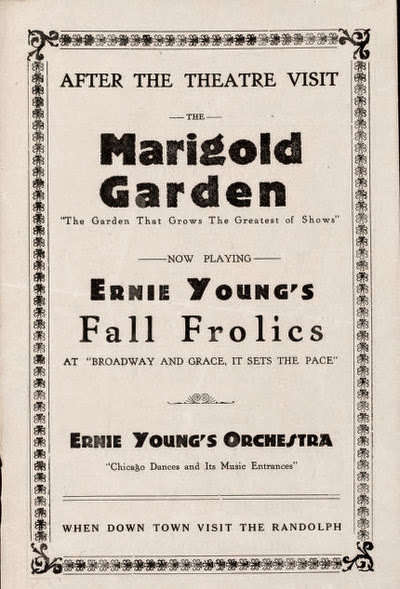


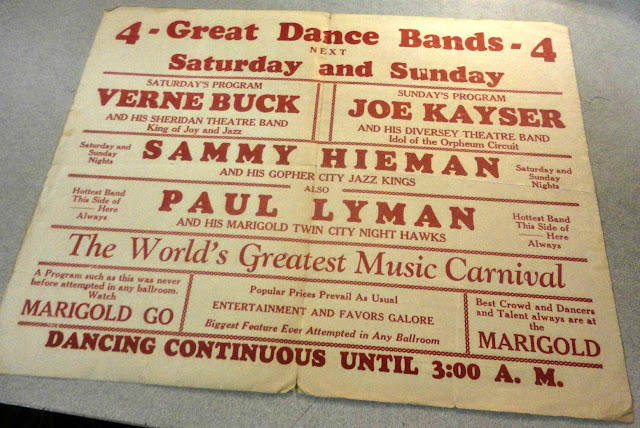



































.jpg)
.jpg)




.jpg)
.jpg)







.jpg)








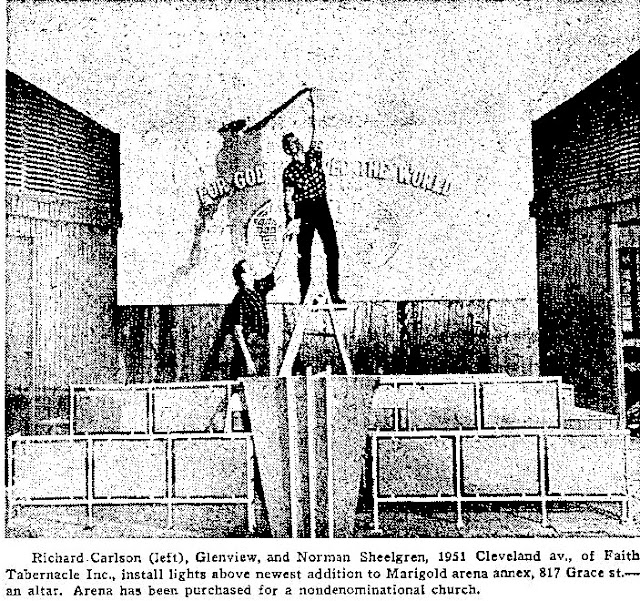









































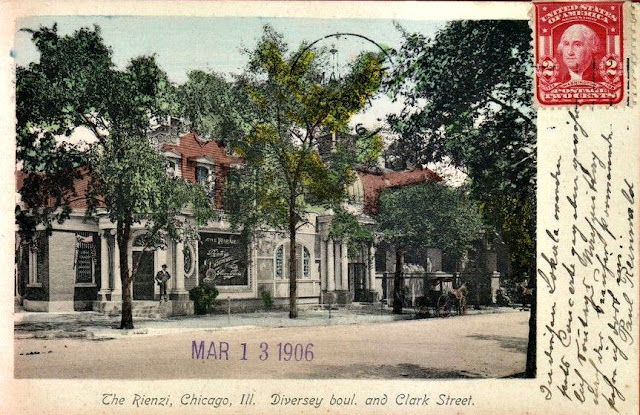



















.jpg)








































